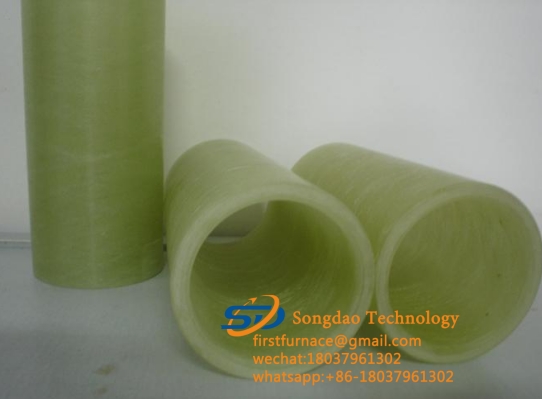- 08
- Feb
Công nghệ sản xuất và phát triển và ứng dụng ống sợi thủy tinh
Công nghệ sản xuất và phát triển và ứng dụng ống sợi thủy tinh
Có ba loại chính ống sợi thủy tinh production processes: reciprocating filament winding process, continuous filament winding process and centrifugal casting process.
Quy trình quấn dây tóc pittông (thuộc phương pháp chiều dài cố định): Trong quy trình này, thùng ngâm pittông chuyển động qua lại với trục quay và các sợi thủy tinh sợi dài được đặt ở một góc xiên nhất định so với trục trục gá và góc phụ (tức là. Góc cuộn dây) được điều khiển bằng tỷ số giữa tốc độ chuyển động của thùng nhúng với tốc độ quay của trục gá, và chuyển động tịnh tiến của thùng nhúng được điều khiển bằng điều khiển cơ điện tử trên máy tính. Số lớp quấn tăng dần cho đến khi đạt được chiều dày thành ống thiết kế. Sau khi hoàn thành việc quấn dây, nhựa trong vật liệu này về cơ bản đã được đóng rắn. Sau khi đóng rắn, trục gá được lấy ra khỏi ống sợi thủy tinh.
Continuous filament winding process (belonging to continuous method): The process is that the tube passes through a feeding station that supplies resin pre-impregnated roving, chopped glass fiber reinforced plastic fiber and resin sand mixture in motion, and the tube is continuously advancing in the core mold. made in.
Centrifugal casting process (belonging to the fixed-length method): In this process, the cut glass fiber reinforced material and sand are fed into a steel mold fixed on the bearing, and the unsaturated resin with catalyst is injected into one end of the steel mold to make the steel mold. It impregnates the reinforcing material. Under the action of centrifugal force, the resin replaces the air in the fibers and fillers, thereby producing a dense composite material without pores. Due to the action of centrifugal force, the inner wall of the tube forms a smooth and clean resin-rich inner surface layer. Cures at higher temperatures. The pipe made by this method is also called glass fiber reinforced plastic sand pipe.

